-
Notifications
You must be signed in to change notification settings - Fork 14
dsf mirabaud jenkins nexus integration
Nexus is used to both host dependencies for devonfw projects to download (common Maven ones, custom ones such as ojdb and even devonfw so-far-IP modules). Moreover, it will host our projects' build artifacts (.jar, .war, …) and expose them for us to download, wget and so on. A team should have a bidirectional relation with its Nexus repository.
By default, when Nexus is installed, it contains 3 user credentials for different purposes. The admin ones look like this: admin/admin123. There are also other 2: deployment/deployment123 and TODO.
// ADD USER TABLE IMAGE FROM NEXUS
In this case, let’s use the ones with the greater permissions: admin/admin123.
Go to Credentials > System (left sidebar of Jenkins) then to Global credentials (unrestricted) on the page table and on the left sidebar again click on Add Credentials.
This should be shown in your Jenkins:
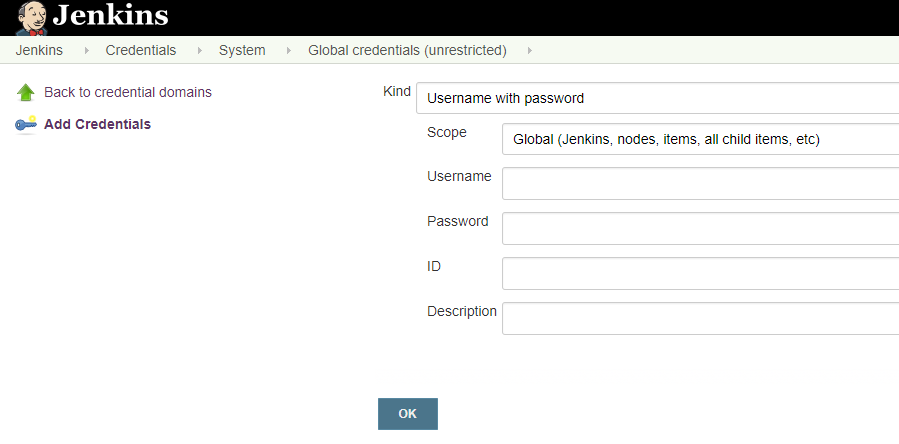
Fill the form like this:
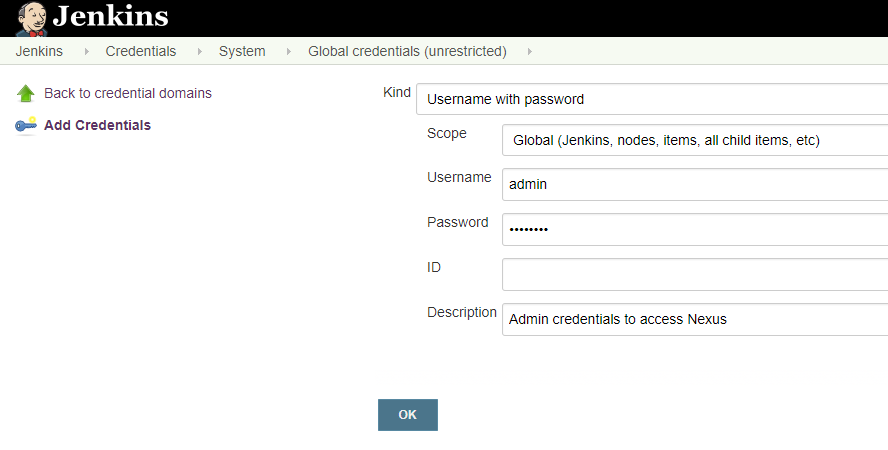
And click in OK to create them. Check if the whole thing went as expected:
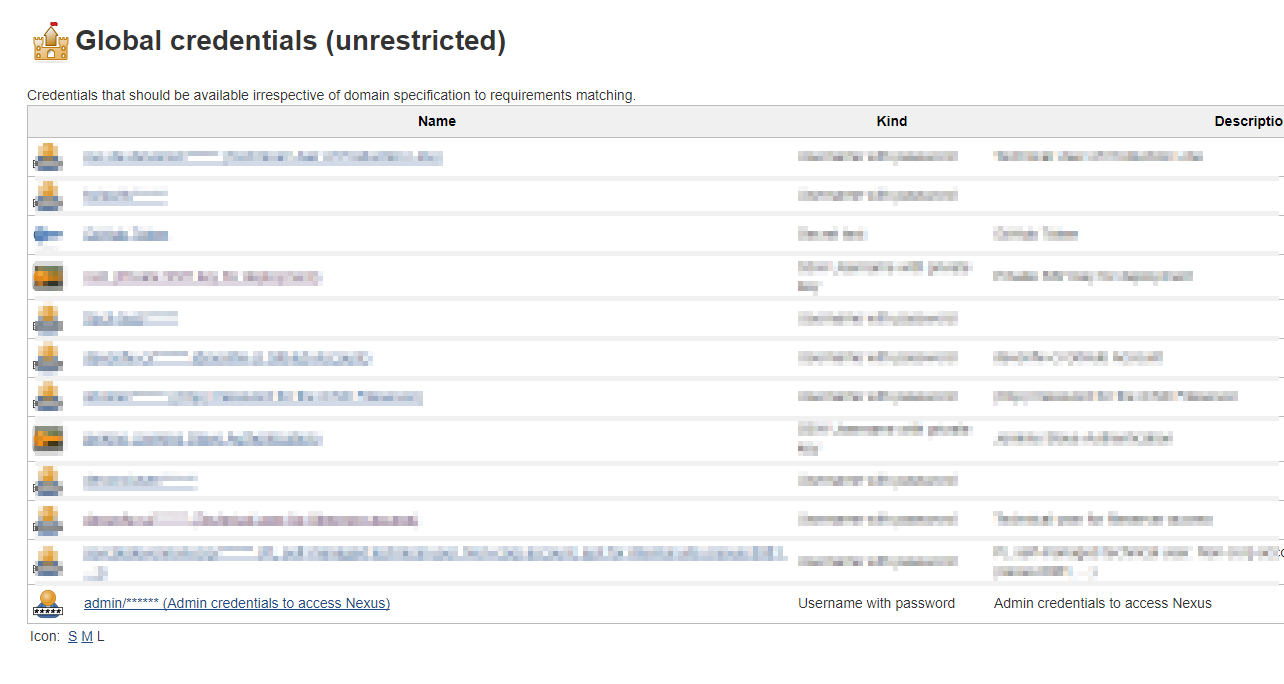
Those settings are also configured (or maybe not-yet-configured) in our devonfw distributions in:
/${devonfw-dist-path}
/software
/maven
/conf
settings.xmlGo to Manage Jenkins > Managed files and select Add a new Config in the left sidebar.

The ID field will get automatically filled with a unique value if you don’t set it up. No problems about that. Click on Submit and let’s create some Servers Credentials:
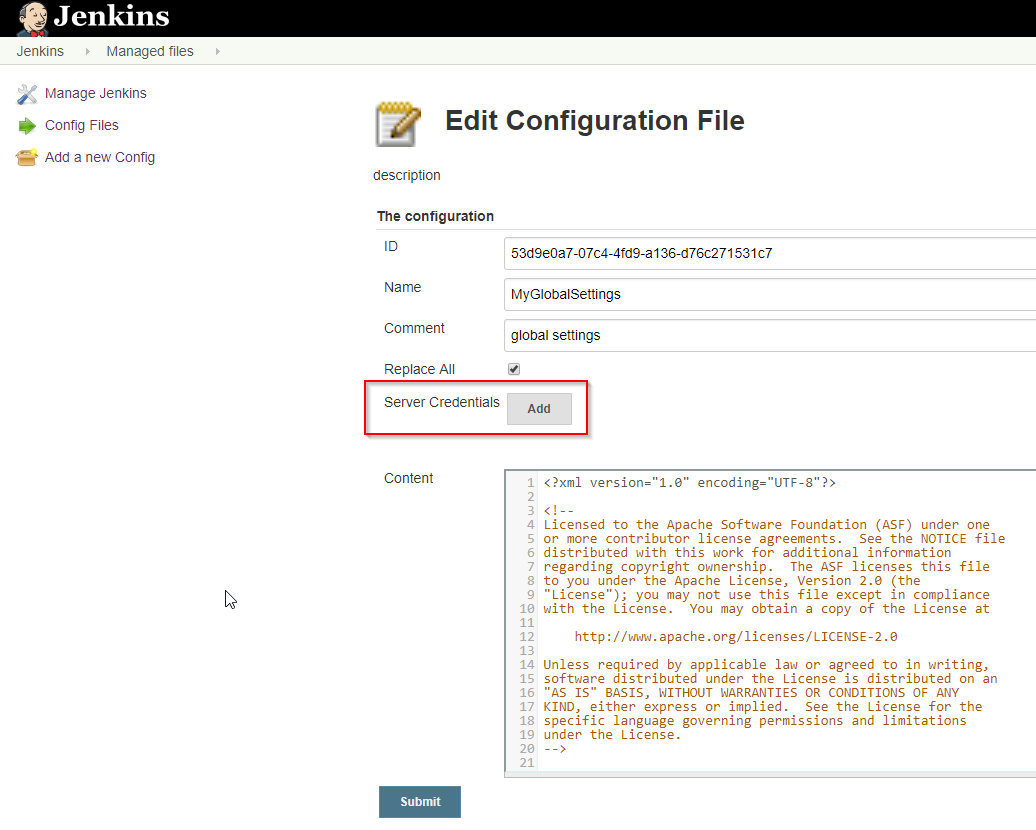
Those Server Credentials will allow Jenkins to access to the different repositories/servers that are going to be declared afterwards.
Let’s create 4 server credentials.
-
my.nexus: Will serve as general profile for Maven. -
mynexus.releases: When amvn deployprocess is executed, this will tell Maven where to push releases to. -
mynexus.snapshots: The same as before, but with snapshots instead. -
mynexus.central: Just in case we want to install an specific dependency that is not by default in the Maven Central repository (such asojdbc), Maven will point to it instead.
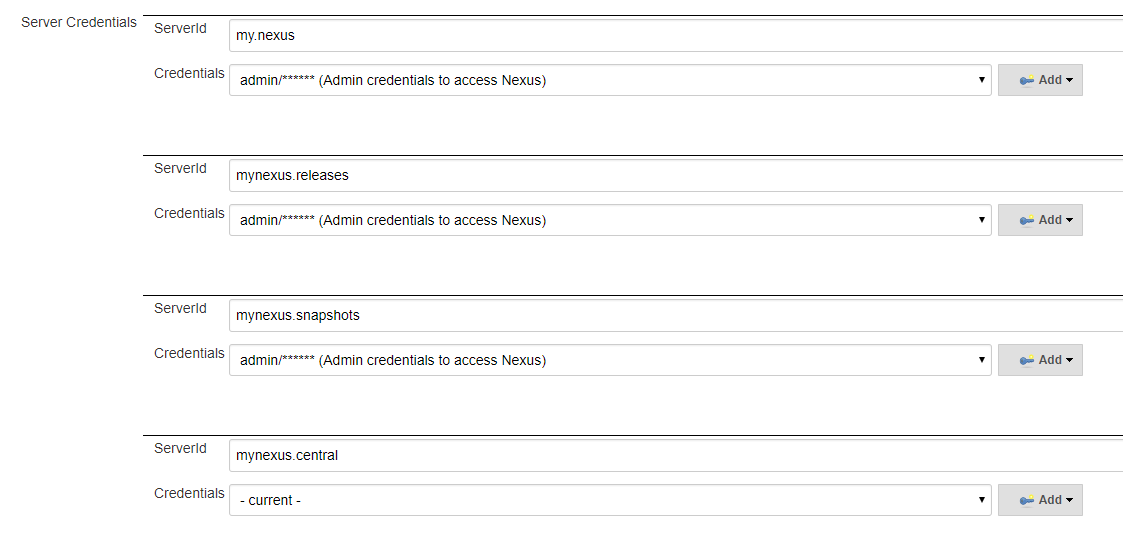
A more or less complete Jenkins Maven settings would look look like this:
<?xml version="1.0" encoding="UTF-8"?>
<settings xmlns="http://maven.apache.org/SETTINGS/1.0.0"
xmlns:xsi="http://www.w3.org/2001/XMLSchema-instance"
xsi:schemaLocation="http://maven.apache.org/SETTINGS/1.0.0 http://maven.apache.org/xsd/settings-1.0.0.xsd">
<mirrors>
<mirror>
<id>mynexus.central</id>
<mirrorOf>central</mirrorOf>
<name>central</name>
<url>http://${URL-TO-YOUR-NEXUS-REPOS}/central</url>
</mirror>
</mirrors>
<profiles>
<profile>
<id>my.nexus</id>
<!-- 3 REPOS ARE DECLARED -->
<repositories>
<repository>
<id>mynexus.releases</id>
<name>mynexus Releases</name>
<url>http://${URL-TO-YOUR-NEXUS-REPOS}/releases</url>
<releases>
<enabled>true</enabled>
<updatePolicy>always</updatePolicy>
</releases>
<snapshots>
<enabled>false</enabled>
<updatePolicy>always</updatePolicy>
</snapshots>
</repository>
<repository>
<id>mynexus.snapshots</id>
<name>mynexus Snapshots</name>
<url>http://${URL-TO-YOUR-NEXUS-REPOS}/snapshots</url>
<releases>
<enabled>false</enabled>
<updatePolicy>always</updatePolicy>
</releases>
<snapshots>
<enabled>true</enabled>
<updatePolicy>always</updatePolicy>
</snapshots>
</repository>
</repositories>
<pluginRepositories>
<pluginRepository>
<id>public</id>
<name>Public Repositories</name>
<url>http://${URL-TO-YOUR-NEXUS}/nexus/content/groups/public/</url>
<releases>
<enabled>true</enabled>
<updatePolicy>always</updatePolicy>
</releases>
<snapshots>
<enabled>true</enabled>
<updatePolicy>always</updatePolicy>
</snapshots>
</pluginRepository>
</pluginRepositories>
</profile>
</profiles>
<!-- HERE IS WHERE WE TELL MAVEN TO CHOOSE THE my.nexus PROFILE -->
<activeProfiles>
<activeProfile>my.nexus</activeProfile>
</activeProfiles>
</settings>
This documentation is licensed under the Creative Commons License (Attribution-NoDerivatives 4.0 International).
-
cicd configuration
-
Manual configuration
-
Automatic configuration
-
-
Custom Services
-
Azure DevOps
